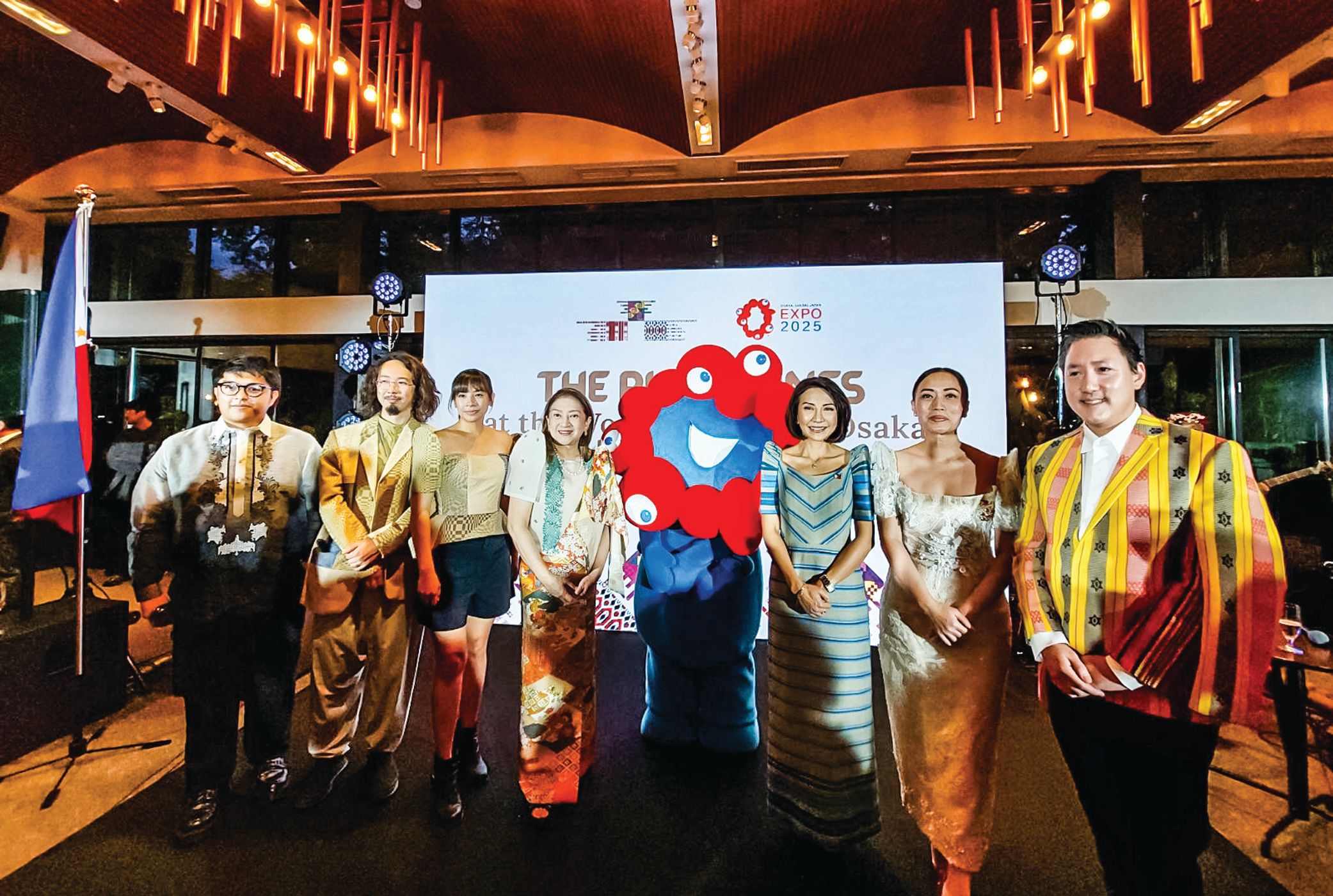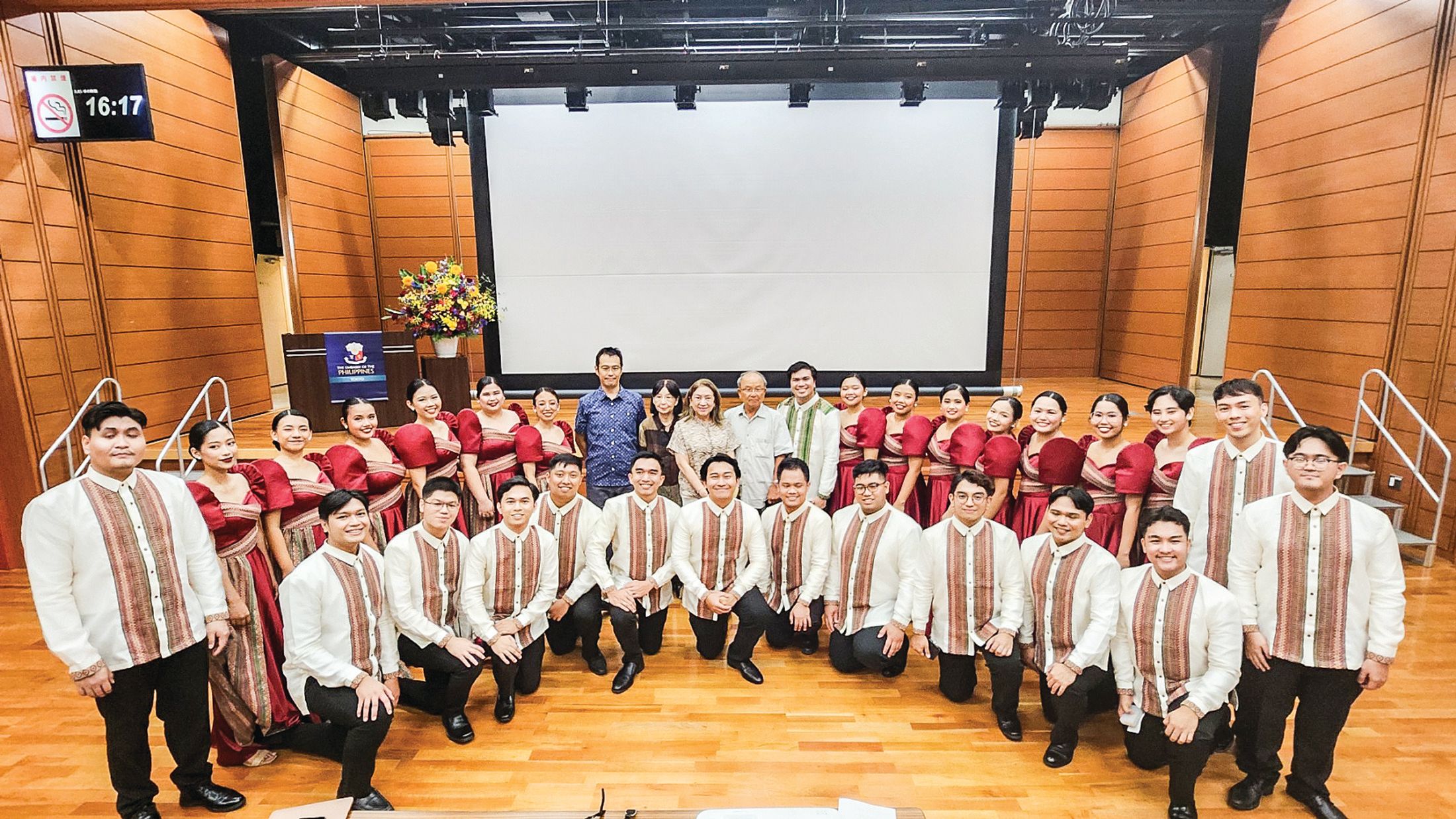We're ready for Osaka
The Philippine Pavilion at World Expo 2025
At A Glance
- 'I know that we have only begun on this exciting journey, but please rest assured that we are fully committed to making our presence at the expo a remarkable and memorable experience.'

Construction of the Philippine Pavilion for the World Expo in 2025 is well underway with two events held last week in Osaka to mark certain milestones in the Philippine participation.
Tourism Secretary Christina Frasco, TPB COO Marga Nograles, Philippine Ambassador to Japan Mylene Garcia-Albano, Philippine Consulate General (PCG) in Osaka Consul General Voltaire Mauricio, and DOT Osaka tourism attaché Jerome Diaz led the ceremonies.
The design, project management, and construction teams, headed by Carlo Calma Consultancies, Inc., along with accredited building contractors Asakawa-gumi and Nishio Rent All, were also present to celebrate the culmination of months of hard work, blending traditional Filipino and Japanese customs.
The celebrations began with a cultural event unveiling the pavilion design and announcing our official participation in the expo to the Japanese audience. The pavilion’s design, conceptualized by Carlo Calma Consultancy, features a woven structure symbolizing the Philippines’ traditional way of life and its forward-looking vision. The design underscores the country’s dedication to fostering cultural pride, innovation, and global collaboration on the world stage, amid the challenges posed by climate change. Despite these challenges, the sustainable ethos embedded in the Philippines’ traditional way of life perseveres, offering a poignant reminder of perseverance and environmental stewardship.
Ambassador Albano, in her remarks, expressed gratitude to everyone involved in the project, highlighting the significance of our participation in the World Expo. “I know that we have only begun on this exciting journey, but please rest assured that we are fully committed to making our presence at the expo a remarkable and memorable experience,” she said.
The event also featured a showcase of modern Filipiniana made of indigenous, woven fabrics, which embodied the design principles behind the Philippine Pavilion, aptly called “Woven.”
The next day, a topping-out ceremony was held on Yumeshima Island, at the pavilion’s construction site. The plot of land has seen the pavilion’s steady rise these last few months with an assured timely completion of the pavilion. This ceremony is a cherished construction tradition, marking the placement of the final beam or structural element on a building, symbolizing good fortune and the successful completion of a major phase.
At the topping out ceremony, the Filipino part included a blessing by a Catholic priest, and the traditional cointhrowing ritual, symbolizing hope and prosperity. “Through this meaningful tradition, we invoke blessings upon the laborers, architects, engineers, and all involved in the construction, as well as for the countless visitors who will gather here next year,” Consul General Mauricio said. “May this site become a beacon of innovation and cultural pride for our nation. Let us embrace this tradition of reverence and optimism, as we embark on this journey together, creating not just a pavilion, but a symbol of Filipino innovation, creativity, and pride that will inspire all to experience its wonders.”
The Japanese ceremony, meanwhile, included the Jotoshiki, celebrating the completion of the mune’age (roof-raising) stage of construction, the Heigushi, an offering to the gods and a decoration to ward off evil spirits. Lastly, the ritual Shiho-gatame no Gi was held to ensure the building’s structural stability and seek protection by “purifying” the four corners of the building through the sprinkling of rice, salt, and sake.
Masashi Nishio, president of Nishio Rent All, expressed his dedication to the project, emphasizing the importance of technical expertise and safety. “We deeply appreciate the opportunity to be involved in such a project,” he said. “We will dedicate all our technical expertise and ensure safety as we work towards completion. We earnestly request the guidance and encouragement of all attendees and stakeholders. We sincerely hope that during the Expo, the Philippine Pavilion will be filled with smiles and become a compelling attraction that visitors will want to revisit.”

Celebrating Philippines-Japan Friendship Day in Tokyo
The Philippine Embassy in Japan and Sentro Rizal – Tokyo successfully hosted A Forum on the Role of Filipinologists and Philippine Studies in Deepening Mutual Understanding on July 29 at the Azabu Civic Center in Minato City, Tokyo.
The forum brought together leading Filipinologists to discuss the role of Philippine studies in fostering stronger ties between the Philippines and Japan. Key speakers included Takushi Ohno, chairman of the University of the Philippines (UP) Alumni Association - Japan Chapter; Dr. Wataru Kusaka, professor at the Tokyo University of Foreign Studies; and Dr. Yoshiko Nagano, professor emeritus at Kanagawa University. I had the privilege of hosting the event and moderating this insightful discussion.
The speakers shared their personal experiences and insights into the history of Philippine Studies in Japan, starting with the entry of Japanese students into Philippine universities in the 1930s. Their narratives highlighted the enduring impact of cultural and academic exchanges between our two nations.
Ambassador Garcia-Albano recognized the contributions of Japanese Filipinologists in bridging cultural gaps between the two nations, saying “As we reflect upon the rich history of our bilateral relations, it is essential that we acknowledge and celebrate the individuals whose dedication to Philippine studies and the deep dive into the Filipino psyche have created a platform for meaningful dialogue.”
Ryo Nakamura, director-general and assistant minister for Southeast and Southwest Asian affairs at the Ministry of Foreign Affairs, noted the positive momentum in PhilippinesJapan ties, expressing optimism in their continued growth. “The government of Japan is strongly committed and determined to even further strengthen our cooperation, our friendship,” he said.
The event featured performances by the UP Los Baños Choral Ensemble, who are in Japan for the Tokyo International Choir Competition. The ensemble won top awards, besting 53 choirs from 16 countries, including gold prizes for the mixed choir and contemporary music categories, a silver prize for the mixed choir category, and most promising conductor for Roijin Suarez. Their performance at the forum added a beautiful cultural backdrop to the forum as the Philippines also celebrates Linggo ng Musikang Pilipino.
The forum was attended by students, academics, members of the diplomatic corps, and the Filipino community in Tokyo. Currently, Philippine studies is being offered by the Tokyo University of Foreign Studies and Osaka University.
The forum capped the Philippine Embassy’s celebration of PhilippinesJapan Friendship Month, serving as a reminder of the enduring ties between our two nations.